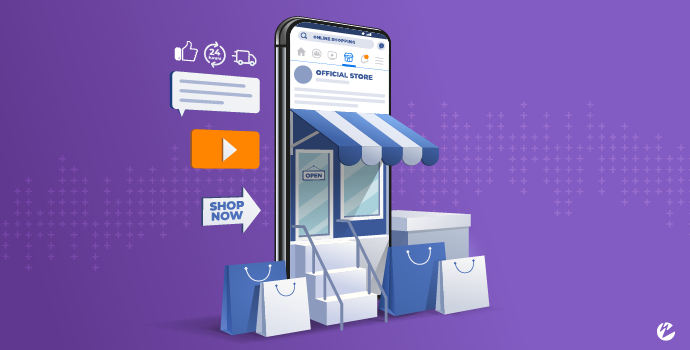Livestream shopping is an innovative blend of e-commerce and live broadcasting that has revolutionized the online shopping experience. This dynamic approach allows customers to watch live product demonstrations, interact with hosts, and make purchases in real time. Here's a detailed breakdown of how livestream shopping works and why it has become a game-changer in the retail industry.
Introduction to Livestream Shopping
What is Livestream Shopping?
Livestream shopping, also known as live commerce, involves streaming live video content where hosts showcase products, demonstrate their features, and engage with viewers. Customers can ask questions, provide feedback, and make purchases directly from the livestream.
The Rise of Livestream Shopping
The popularity of livestream shopping has surged due to its interactive nature and the personalized shopping experience it offers. Originally popularized in China, this trend is now gaining traction worldwide, offering retailers a new way to connect with their audience and drive sales.
The Mechanics of Livestream Shopping
1. Preparation and Planning
Before a livestream event, retailers and hosts prepare by selecting products, creating a script, and setting up the technical aspects of the stream. Key steps include:
- Product Selection: Choosing a range of products to showcase during the livestream.
- Scripting and Rehearsal: Developing a script to highlight product features and benefits, and rehearsing to ensure a smooth presentation.
- Technical Setup: Ensuring high-quality video and audio, stable internet connection, and proper lighting.
2. Live Broadcasting
During the livestream, hosts present products, demonstrate their use, and interact with viewers in real time. Key elements of live broadcasting include:
- Engaging Presentation: Hosts use their personality and expertise to engage viewers, making the experience entertaining and informative.
- Real-Time Interaction: Viewers can ask questions, comment, and react, creating a two-way conversation that mimics in-store shopping.
- Call-to-Action: Hosts encourage viewers to make purchases by highlighting limited-time offers, discounts, or exclusive deals available only during the livestream.
3. Integrated E-commerce Features
To facilitate seamless shopping, livestream platforms integrate various e-commerce features, including:

- In-Video Purchase Buttons: Viewers can click on products displayed during the stream to add them to their cart or buy instantly.
- Product Information Overlays: Detailed product information, prices, and availability are displayed within the video.
- Secure Payment Gateway: Users can complete their purchases securely without leaving the livestream.
4. Post-Livestream Engagement
After the livestream ends, retailers can continue to engage with their audience through follow-up actions:
- Replay Availability: Providing access to recorded livestreams for those who missed the live event.
- Customer Support: Offering support to answer any post-purchase questions or address concerns.
- Feedback Collection: Gathering feedback from viewers to improve future livestreams and enhance customer satisfaction.
Benefits of Livestream Shopping
1. Increased Engagement and Interaction
Livestream shopping creates a highly engaging experience by allowing real-time interaction between hosts and viewers. This direct engagement helps build trust and rapport, leading to higher customer satisfaction.
2. Higher Conversion Rates
The interactive and immediate nature of livestream shopping often results in higher conversion rates. Viewers are more likely to make impulse purchases due to the persuasive and entertaining presentation of products.
3. Enhanced Customer Experience
By providing a personalized shopping experience, livestream shopping enhances customer satisfaction. Viewers can see products in action, ask questions, and receive instant responses, making the shopping process more informative and enjoyable.
4. Real-Time Feedback and Insights
Retailers can gain valuable insights from real-time feedback during livestreams. Understanding customer preferences and concerns helps in refining product offerings and marketing strategies.
Technological Requirements for Livestream Shopping
1. High-Quality Streaming Technology
Successful livestream shopping relies on high-quality video and audio streaming. Key requirements include:
- Stable Internet Connection: Ensuring a reliable and fast internet connection to avoid interruptions.
- Professional Equipment: Using quality cameras, microphones, and lighting to deliver a professional presentation.
2. Interactive Features
Incorporating interactive features enhances the shopping experience. Important features include:
- Live Chat: Enabling viewers to interact with hosts and other viewers in real time.
- Reaction Buttons: Allowing viewers to express their feelings through likes, hearts, and other reactions.
- Polls and Surveys: Engaging viewers by seeking their opinions during the live session.
3. Secure E-commerce Integration
Integrating secure e-commerce functionality is crucial for facilitating purchases. Key elements include:
- Payment Gateways: Providing multiple secure payment options.
- Inventory Management: Ensuring real-time updates of product availability.
- Order Tracking: Offering customers the ability to track their orders post-purchase.
Challenges in Livestream Shopping
1. Technical Issues
Livestreaming requires a stable internet connection and high-quality equipment. Technical issues such as lag, poor video quality, or audio problems can disrupt the shopping experience.
2. Audience Engagement
Maintaining viewer engagement throughout the livestream can be challenging. Hosts need to be skilled in keeping the audience entertained and involved.

3. Scalability
As the popularity of livestream shopping grows, platforms must ensure they can scale to handle large audiences without compromising on performance.
Future Trends in Livestream Shopping
1. Integration with Social Media
Livestream shopping is increasingly being integrated with social media platforms, allowing retailers to reach larger audiences and leverage social networks for enhanced engagement.
2. Augmented Reality (AR) and Virtual Reality (VR)
AR and VR technologies are set to revolutionize livestream shopping by providing immersive experiences. Customers can virtually try on products or visualize them in their environment before making a purchase.
3. AI and Personalization
Artificial intelligence is enhancing personalization in livestream shopping. AI can analyze viewer data to provide tailored recommendations and offers, improving the overall shopping experience.
Conclusion
Livestream shopping represents a transformative shift in the e-commerce landscape, combining the immediacy and interactivity of live video with the convenience of online shopping. By leveraging high-quality streaming technology, engaging presentations, and seamless e-commerce integration, retailers can create compelling shopping experiences that drive engagement, conversions, and customer satisfaction.





